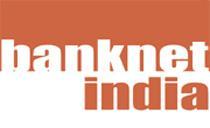
Safety, liquidity and returns are the three pillars of investing. Good investing should result in steady and regular return on investment. Savings are a must for any return, but savings in the form of investment alone earn any return. Savings in cash are not only without any return but are also prone to depreciation due to inflation. Return on investment may take the form of appreciation in value, receipt of income or both. For example, bonds and debentures give regular interest income annually or half yearly, but hardly any appreciation in value, whereas real estate may give only appreciation in value but no regular income. Equity shares of good companies could yield annual dividend as well as appreciation in value.
Risk and returns complement each other. The higher the risk, higher the returns. One should take the decision on the type of instrument depending on the capacity of taking risk as well as requirement of liquidity. Here the concept of life cycle becomes helpful in taking decisions on the type of investment. Availability, needs & other requirements of funds change with the age and social status of the person. For the purpose of investment strategy, an individual's life cycle can be divided into four stages - early career, mid career, late career, and retirement.
In early career, the individual is below the age of 30. He/she is single and, in many cases, does not have any dependents. At this stage in life, he can afford to take high risks in the pursuit of high returns. But at this stage, individual may not have sufficient funds to invest. A additional prudent step at this level is to estimate one's insurance requirements and take a long-term risk cover as the insurance rates are the least at this stage.
In mid career, the individual is between the age of 30-45 and has saved some money. By this time in life, the individual is generally married, have an insurance cover, invest in himself and still have some surplus left behind to invest. At this stage one can afford to take high risks. The investment at this stage should, however, be with a long-term perspective. In fact, a split portfolio at this stage is ideal. One that will set aside a substantial chunk, say, 60% of the investible surplus as a safety net in long term, least risk securities, even at the cost of lower returns, and the remaining 40% in high returns securities, which will naturally come with a higher risk element. The earlier an individual invests in constructing or purchasing one's own dwelling (house/flat), in this stage, better it is. In the current scenario, GOI allows substantial tax benefits on the funding of an individual's first dwelling unit. For instance, rebate on income is available on the interest you pay for the funds raised for the dwelling unit, both for own occupation and letting out. It, therefore, makes sense to fund the unit with maximum amount of borrowed funds albeit at reasonable cost. Depending upon one's resources, the dwelling unit should be such as can be easily split into two at a later stage.
In late Career, the individual is between 45-60. In the early part of this stage, higher education of children is a major drain and in the latter, may come marriages of children. By this time, the individual should have paid off any loans taken for buying or constructing the dwelling unit. The individual investments in the earlier stages should have built up a reasonable base of assets. At this stage, the earnings will also be high. At the same time, one's investments have to be planned with a shorter time frame in mind and so, investments at this stage should lean more towards the conservative side. Preservation of capital becomes an important concern and hence, risk exposure should be reduced. The yield obviously will come down.
After retirement, earnings in the form of salary are more or less not there and the individual has to fall back on the investments made in the earlier stage. This is no stage to take risks and investments should be made very conservatively, emphasis being on steady return rather than spectacular gains. But at the same time, not all your money should be invested in conservative low yielding instruments. Investments made in a suitable dwelling unit which is large enough to be split into two for letting out for steady returns, come handy at this stage.
Senior citizens and risk averse investors could park their savings in safe instruments like PF, PPF, NSCs, bonds and debentures of financial institutions which offer returns higher than bank deposits and are as safe and liquid as well. Units of UTI and certain mutual funds also offer safe and steady returns. These units provide an additional feature of tax exemption in respect of (long term) capital gains if invested within six months and held for at least three years or seven years depending on the quantum of investment. Deposits and debentures of reputed public sector companies enjoying AAA rating offer higher returns than bank deposits but enjoy no tax concession. These are moderately safe investments and merit some part of savings of senior citizens and investors in need of regular income. A risk return continuum in a vertical format will look like:
Government and Postal Deposit Schemes. NSCs, PPF, Government Securities
Public Sector Bank Deposits
UTI units
Other Mutual funds
Bonds from Financial Institutions
Govt., PSU bonds
Non-convertible Debentures
Convertible Debentures
Company deposits and debentures
Equity Shares
Company deposits
Investment in fixed assets like land, housing
Venture Capital
Some other issues of importance for an individual are:
How to decide & customise bank accounts
Investment in real estate
Income management
Tax Planning













